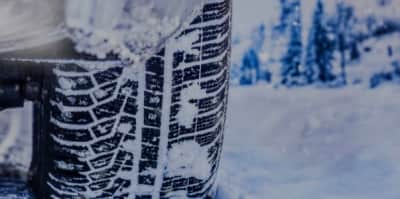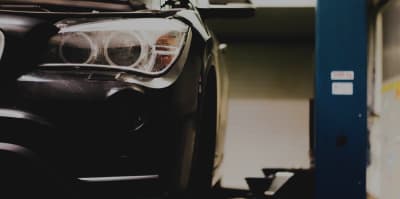
You can find all sorts of information about the head gasket, and many car owners are aware of the functions of it, but much less know about the cylinder head itself. That's why we've put together everything you need to know about the cylinder head. Learn how the cylinder head in your car works, why it matters, and what defects can occur.
What is the cylinder head doing in my car?
The main task of the cylinder head is to close the combustion chamber of the engine from the top. The upper part of the engine is called the cylinder head, while the lower part is the engine block. The cylinder head sits on the engine and closes off the combustion chamber. The gap that remains between the cylinder head and the engine is completed by the head gasket.
Another task of the cylinder head is to ensure the constant lubrication of the cylinder. If the cylinders are not well-oiled, a smooth operation of the engine is not possible, which is why the cylinder head is an indispensable part of the function of the engine.
This is how a cylinder head is built
The cylinder head is not only a very important part of your engine, but also one of the most expensive parts of the vehicle's engine due to its complex structure. Since the cylinder head is exposed to very high temperatures during the combustion process, it consists of resistant aluminum alloys and light metals.
At the bottom, it is usually anchored directly to the crankshaft housing and closed at the top with a valve cover. Depending on whether your vehicle has a diesel or gasoline engine, the structure of the cylinder head differs.
These are the components of a cylinder head in a gasoline engine
- Inlet and exhaust ducts: These ensure that the exhaust gas can escape from the cylinders and the absorbed air-fuel mixture can get into the cylinders
- Inlet and exhaust valves: This is where petrol engines suck an air-fuel mixture in, while exhaust gases are simultaneously transported to the exhaust system
- Camshafts: A crankshaft driven by the timing belt drives the camshafts. The camshafts are responsible for opening and closing the valves
- Injectors: They ensure that the fuel is injected into the combustion chambers
- Spark plugs: They initiate the combustion of the fuel
These are the components of a cylinder head in a diesel engine
- Inlet and exhaust ducts: They allow exhaust gas to escape from the cylinders and allow the captured air-fuel mixture to enter the cylinders
- Inlet and exhaust valves: Diesel vehicles suck air in through the inlet and exhaust valves while exhaust gases are simultaneously transported to the exhaust system
- Camshafts: A crankshaft driven by the timing chain drives the camshafts. The camshafts are responsible for opening and closing the valves
- Injectors: These inject the fuel in diesel engines into the combustion chambers or antechambers
- Glow plugs: They act as a cold-start aid
Can the cylinder head get any defects?
Unfortunately, the complex structure of the cylinder head and its numerous tasks make it prone to defects. The most common defect is a leaking cylinder head gasket, which is caused by an increased abrasion. See more in our blog post on the signs of a defective head gasket.
There can also be defects on the cylinder head itself, for example, by the high temperatures and strong vibrations in a running engine. This can lead to cracks in the material of the cylinder head.
Repair or restoration of the cylinder head?
Many defects can require a repair of the cylinder head, which can be very expensive. Since the cylinder head is installed in the engine, extensive work on this engine component is associated with a repair or a restoration.
In most cases, the cylinder head must first be removed and then ground flat after a repair, as this is the only way to ensure that it closes the lower part of the engine correctly.
An exchange of the cylinder head is only due in rare cases. Mostly, cylinder head defects relate to easily replaceable parts, such as the valves.
On this page, find more information on how much the repair of the cylinder head costs.
How to recognize signs of possible defects
If you notice irregularities in the functioning of your engine, it is advisable to contact a garage as soon as possible to prevent further damages.
The signs of cylinder head defects include:
- You notice a power loss of the engine
- The cooling water temperature is in the red area
- You see oil in the cooling water
- You must refill water and oil after just a short time
- You notice a bad cold start behavior
How is the cylinder head cooled in the engine?
As already described above, the cylinder head is exposed to high temperatures and must therefore be cooled in order to avoid overheating and increased abrasion. There are two different types of cylinder head cooling: cooling with water or with air.
Air-cooled cylinder heads
Air-cooled cylinder heads are only cooled by the passing air. In addition, they are equipped with a large cooling fins.
Among the advantages of this cooling method is that it ensures reliable functionality and can be built both very simply and inexpensively. Accordingly, the repairs to such cylinder heads are cheaper than repairs of water-cooled cylinder heads. In addition, you do not have to worry about freezing the cooling liquid when cooling the air.
Water-cooled cylinder heads
Most modern engines are cooled using water. For this purpose, a mixture of water and a frost agent is usually used as the cooling liquid. To cool the cylinder head, the coolant is passed through the cylinder head gasket into the cylinder head.
One of the advantages of this type of cooling is, above all, that the cooling liquid can absorb and also dissipate large amounts of heat. In addition, this cooling method is the most effective.







